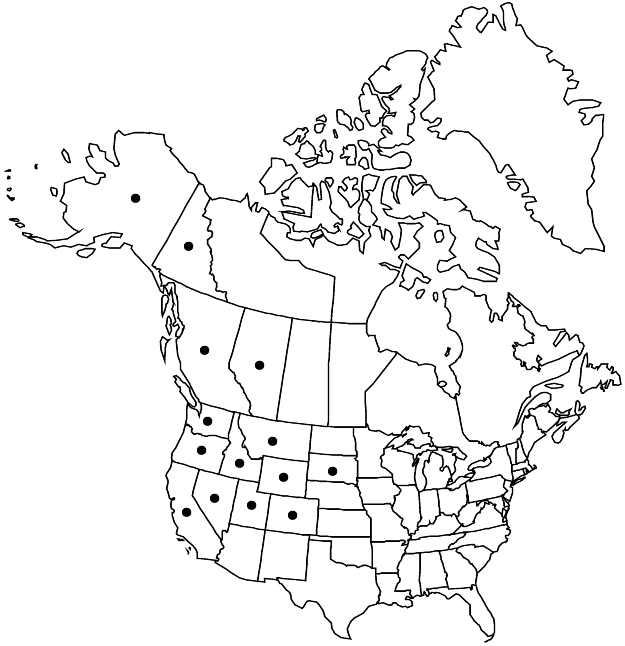Mitella pentandra
Bot. Mag. 56: plate 2933. 1829 ,.
Plants sometimes stoloniferous. Flowering-stems 8–48 (–60) cm. Leaves: petiole (0.9–) 1.5–8.5 (–14) cm, subglabrous or sparsely short-stipitate-glandular and, sometimes, sparsely long-stipitate-glandular, longer hairs spreading to retrorse, white, tan, or brown; blade ovate-cordate, ± as long as wide, (1–) 2.3–8.5 × (1–) 2.1–8 cm, margins shallowly (3-), 5-lobed, 7-lobed, or 9-lobed, doubly crenate-dentate, glabrous, apex of terminal lobe acute to obtuse, surfaces subglabrous or sparsely long-stipitate-glandular; cauline leaves usually absent, sometimes 1, proximal or distal, sessile or petiolate, blade 0.2–3 × 0.2–2.2 cm. Inflorescences 1–3 (–4), remotely 6–25-flowered, 1–2 flowers per node, not secund, 8–48 (–60) cm, glabrous, subglabrous, or sparsely short-stipitate-glandular proximally, short-stipitate-glandular distally. Pedicels 1.5–5 (–8) mm, short-stipitate-glandular. Flowers: hypanthium broadly saucer-shaped, (0.6–) 0.8–2 × (1.7–) 2–2.8 mm; sepals spreading or recurved, greenish yellow or greenish, triangular to broadly triangular, 0.6–1.1 × 0.7–1.2 mm; petals greenish, 5–11-lobed, 1.5–3 mm, lobes linear, lateral lobes spreading; stamens 5, alternate sepals; filaments white, 0.1–0.2 mm; anthers 0.2–0.3 × 0.5–0.7 mm; ovary ± completely inferior; styles divergent, flattened, 0.1–0.2 mm; stigmas 2-lobed. Seeds reddish-brown, 0.6–0.9 mm, pitted. 2n = 14.
Phenology: Flowering May–Aug.
Habitat: Moist woods, stream banks, avalanche tracks, wet mountain meadows, shaded banks
Elevation: 1000-3700 m
Distribution

Alta., B.C., Yukon, Alaska, Calif., Colo., Idaho, Mont., Nev., Oreg., S.Dak., Utah, Wash., Wyo.
Discussion
Selected References
None.
Lower Taxa
"full" is not a number.